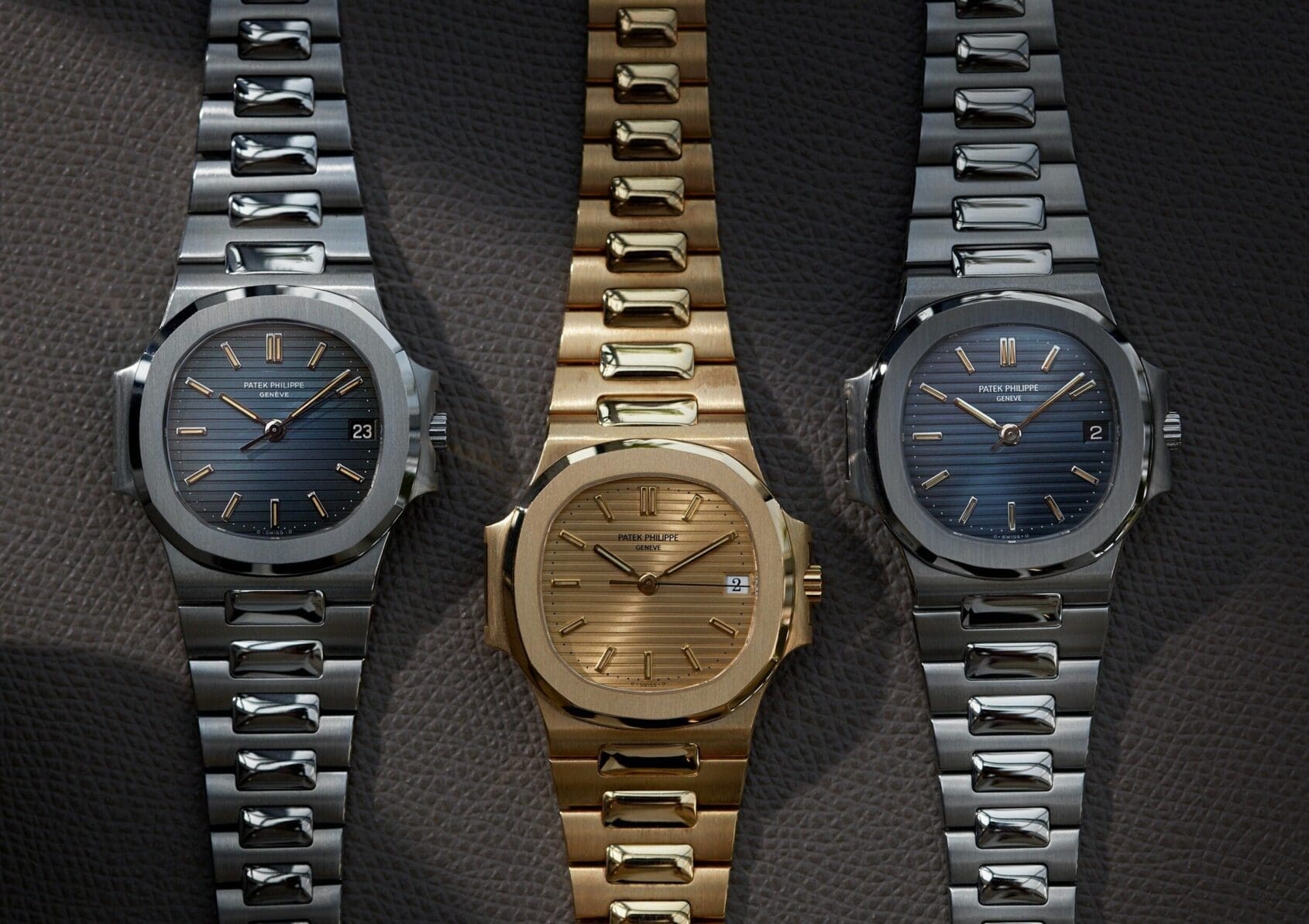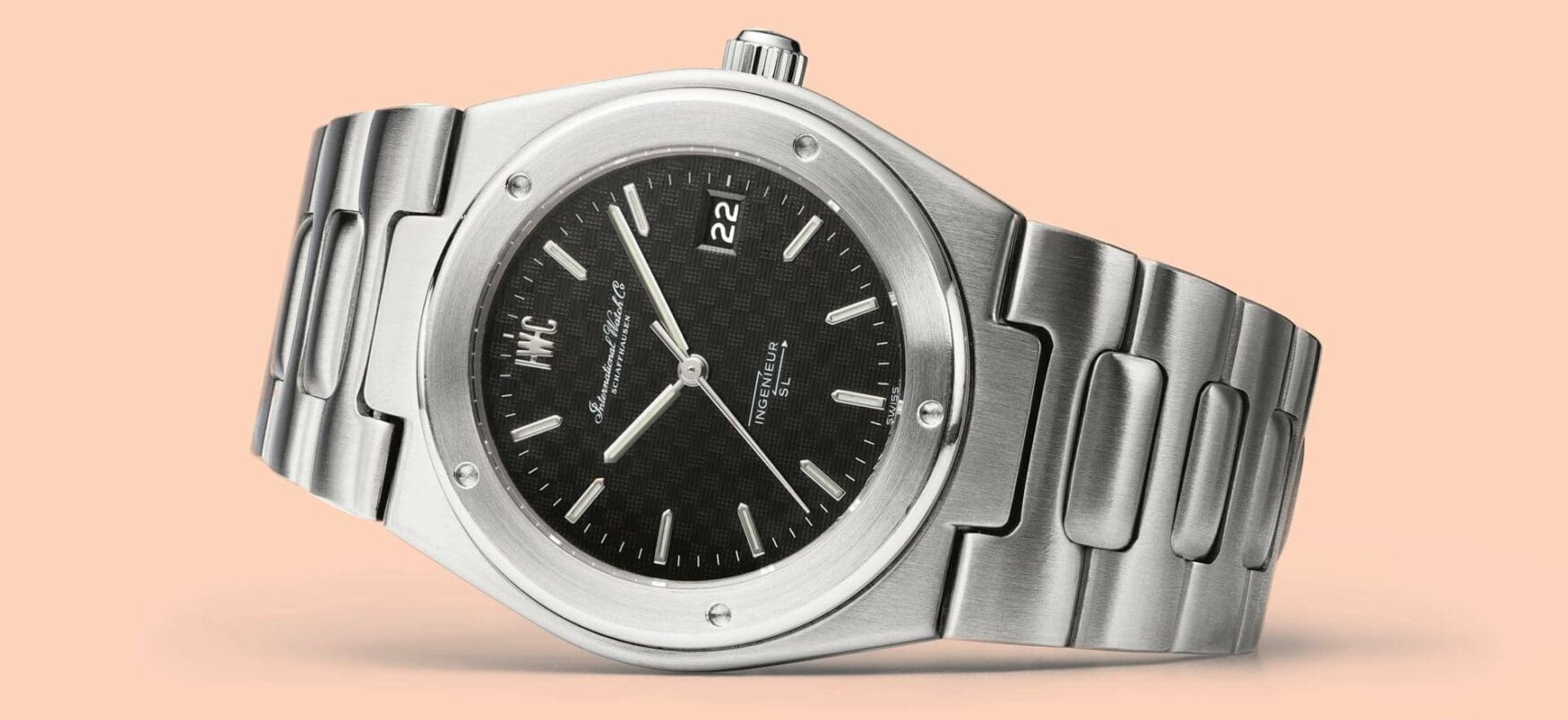10 of the best Gérald Genta designs for other brands
Zach BlassGérald Genta. Anyone who calls themselves a watch enthusiast is familiar with the legendary designer, and the mainstream consumer base for watches – whether they realise it or not – is definitely familiar with one or more of his designs. Arguably the two most desirable watches in the world, the Audemars Piguet Royal Oak and Patek Philippe Nautilus, are Genta designs and they are so in demand they have achieved “unobtanium” status and high premiums on the secondary market.
Of course, Genta’s pantheon of designs is by no means limited to those two market-dominating watches. According to the Gérald Genta Heritage Association, he designed over 100,000 watches before he died at the age of 80 in 2011. To dig into all 100,000 would be too much to handle in one sitting, and to be honest, there are designs that some credit to Genta and others do not. So, here are ten of the best definitive Gérald Genta designs for other brands.

Universal Genève Polerouter (1954)

A go-to for budding watch collectors looking to enter the world of vintage, the Polerouter was designed by Gérald Genta at the age of 23 and is considered to be the first of his legendary designs. According to Gérald Genta Heritage: “The SAS Polerouter was commissioned by Universal to commemorate the historic flight from Copenhagen to Los Angeles via the North Pole. The first watches were given to the cabin crew of the Scandinavian Airlines Systems (SAS) upon landing in LAX.”
While commissioned with tool watch intentions, the final design offered a dapper, dare I say elegant, aesthetic befitting of pilots of the era with its stepped and multi-textured dial that added enticing visual flair. The lyre lugs of the 35mm case was also a wonderful added detail, and from 1955 onward the watch was powered by a micro-rotor calibre. All considered, the watch, to this day, ticks a lot of boxes in regard to what people look for in a watch and can be had for US$2,000.
Omega Constellation (1959)

In 1959, possibly prior, Gérald Genta was enlisted to refine and refresh the Constellation range for Omega – putting his Midas touch on the collection. You can see his design signatures in his revitalisation of the Constellation, initially introducing a faceted pie-pan dial with a dodecagonal central medallion that perhaps is a forbearer to his later fascination with octagonal case forms.

You will also notice, like the Polerouter, a similar play with depth, texture, and a faceted central medallion. Ultimately, the Constellation once again made something originally with a tool-ish background become elegant in feel and form.
Rolex Cellini King Midas (1964)

If unconventional geometries, or at least unconventional for their time, were his calling card, Gérald Genta definitely brought his compelling design magic to Rolex with the Cellini King Midas. Considering the tool-watch focus and Oyster Perpetual framework focus of the era, the asymmetrical, brutalist King Midas was certainly an odd-ball within the collection. On the right side of the case and bracelet it is a straight line, but the left side of the case and bracelet slopes down from the crown as its peak. A crown on the left side of a watch is already a quirk, but a somewhat triangular form is a whole other quirk factor. The watch today is not one of the more sought-after vintage references, but celebrities caught in the wild wearing one, such as Rihanna, The Weeknd and even Elvis back in the day have certainly resurged interest for fashion-forward watch wearers.
Audemars Piguet Royal Oak (1972)

Things really heated up for Gérald Genta in 1970, when he was first commissioned to design the first luxury steel sports watch; a watch which would go on to forever change the industry: the Audemars Piguet Royal Oak, a striking octagonal design inspired by vintage dive helmets. Gérald Genta Heritage explains: “Inspired by a vintage diving helmet attached to the rest of the suit with screws, the model was sketched in one night only. He transferred the octagonal shape to the design of this piece, keeping the screws on the bezel.”
At the time, to unveil such a high-end and high-priced steel watch was unfathomable and incredibly daring. But, taking it a step further, the marketing materials leaned into this bold strategy by owning its unprecedented pricing. As I explained in a previous article, the most expensive steel watch at the time supposedly retailed for CHF 850. Upon its debut, the Royal Oak commanded a retail price of CHF 3,300. In fact, it was not just more expensive than other steel watches – but also gold watches as well. Within the Audemars Piguet 1972 catalogue, for example, the yellow gold Model 5043, equipped with ultra-thin Calibre 2003 was listed at CHF 2,990. Fifty-one years later, the Royal Oak remains AP’s flagship collection and, with demand far exceeding supply, google searches on how to buy a Royal Oak at retail are likely abundant.
Patek Philippe Nautilus (1976)

To design one legendary icon like the Royal Oak alone secured Genta’s place on the Mount Rushmore of watch design. But only four years later, Gérald Genta would go on to create the Royal Oak’s greatest rival: the Patek Philippe Nautilus. As Gérald Genta Heritage explains: “Similarly, to the Royal Oak, it too was inspired by the nautical world, but this time taken from the portholes of the transatlantic ships. The watch was named Nautilus in tribute to Captain Nemo’s submarine in Jules Verne’s novel 20,000 Leagues Under the Sea. As the story goes, he sketched the watch in five minutes on a paper napkin in a restaurant.”
Forty-seven years later, the enduring design remains (arguably) the most desired wristwatch in the world. Anecdotes claim that the waitlist for purchasing the recently discontinued Nautilus 5711 entailed waiting nearly a decade. With Patek Philippe less focused on the production of steel watches, certainly steel sports watches, the manufacture has refused to ramp up production to accommodate demand. This has resulted in exorbitant premiums on the secondary market, which, at its peak last year, was over US$200,000 for a watch that retails just above US$30,000.
IWC Ingenieur (1976)

The same year as the Nautilus was brought to market, Gérald Genta refined the IWC Ingenieur with a refreshed design. Clear codes and signatures can be found in its aesthetic, but the new total sum of familiar elements results in a distinguished look. Defined by a five-screw bezel, rounded tonneau case, male integrating case endlinks, and a focus on anti-magnetism, Genta’s IWC Ingenieur is beginning to get more and more attention from collectors in this age of integrated sports watch love. The modern Ingenieur still reflects codes of its heritage but has since undergone multiple evolutions that have built upon Genta’s design. That being said, with a greater focus being drawn to the 1976 model it is clear collectors would love to see IWC return to a more pure Genta take on the watch back to the collection.
Read Matt Pickering’s take on how the IWC Ingeniuer changed him to be a one-watch guy.
Seiko Credor Locomotive (1979)

Another Genta design many draw a parallel to a predecessor, the Credor Locomotive was Genta embracing Japan’s biggest watchmaker. In 1979, he was enlisted by Seiko Credor to create a watch for the then president of the corporation, Reijiro Hattori. While its case, bezel, and bracelet may remind you of the Royal Oak, the watch was apparently not inspired by nautical or diving themes. As its name suggests, the muse for the Credor Seiko design was the ‘locomotive’ or trains.
Subtle details give the watch a distinguished look, such as a new shape for the intermediary links, the manner in which the case integrates into the bracelet, the dial pattern (in line with the nature-inspired aesthetics we see from Seiko today), a crown at 4:00, and an in-house quartz movement.
Cartier Pasha (1985)
Another example of Genta remixing an established design, in 1985 he was enlisted to refresh the Pasha collection for Cartier, one of Cartier’s most eclectic watches. Gérald Genta Heritage explains: “Fifty years after the original piece was made by Louis Cartier for the Pasha of Marrakech’s swimming sessions and banquets, the Maestro reimagined the vintage men’s watch. Redesigned in 1985, he kept the watch characteristically Genta with a timepiece that embodied yet another perfect balance between luxury and sport.
“Cartier had missioned Genta to recreate the watch with a new sporty edge, but also in keeping with the traditional elegance associated with the famous watch brand. The round watch face that Genta designed positively broke boundaries for Cartier, opening a new era of round-faced designs for them, but Gérald Genta kept key features of the brand, notably the Vendome lugs and blue sapphire.”
Bulgari Roma (now the Bulgari Bulgari)

Gérald Genta, while born in Geneva, had a Swiss mother and Italian father. So who better for Bulgari – the Roman jeweller of time – to enlist than Genta for a fresh new design: the Bulgari Roma. Gérald Genta Heritage explains: “The design of the famous Bulgari-Bulgari bears its roots in the ancient Roman coin. From this, Gérald Genta designed a watch that would become an emblem for Bulgari, even impacting on the style of other brands. The purity and simplicity of this model translated into a huge success. The impact of Bulgari-Bulgari, initially Bulgari-Roma, was considerable.”
Like many of Bulgari’s older references, the Bulgari Bulgari has undergone many evolutions over the years. The through line, however, is the line’s distinctive bezel with dual Bulgari branding. It is fair to say the watch today skews more sporty than its predecessor, not to diminish its elegance by any means at present. But, considering an offshoot of the Bulgari Bulgari, the Bulgari Aluminum, is a bestseller for Bulgari today, they certainly owe some gratitude for the foundation Genta built.
Bulgari Octo

To be fair, it is certainly recognised Bulgari admires Genta’s penchant for design, as Bulgari acquired the Gérald Genta brand and, in turn, Genta’s designs for the watches under his own name, in 2000. Within this acquisition lies the foundation of the Octo collection, the base framework that ultimately led to the Bulgari Octo Roma and, later, the Bulgari Octo Finissimo designed by current Product Creation Executive Director Fabrizio Buonamassa Stigliani. Perhaps the poetry in the birth of the Finissimo is the fact that Fabrizio continued the tradition of Genta, being enlisted to remix and refine a previous design to create a future-forward, compelling, and distinguished design that would deliver the ultimate aesthetic to the current market. While it was on the record Genta did not particularly enjoy the evolution of the Royal Oak into the Royal Oak Offshore, I imagine Genta would appreciate and praise the direction Fabrizio has since taken the Octo line in.






